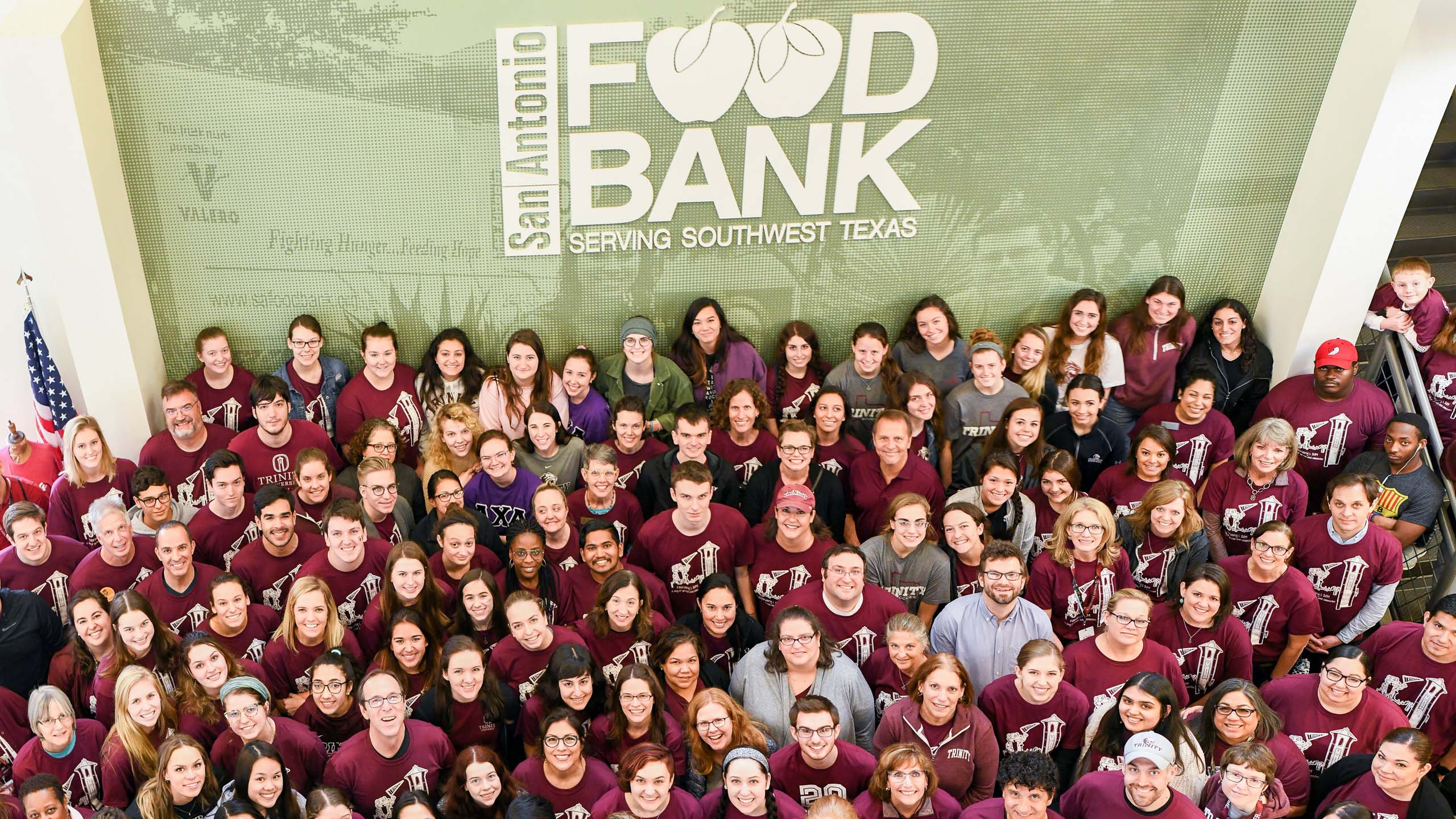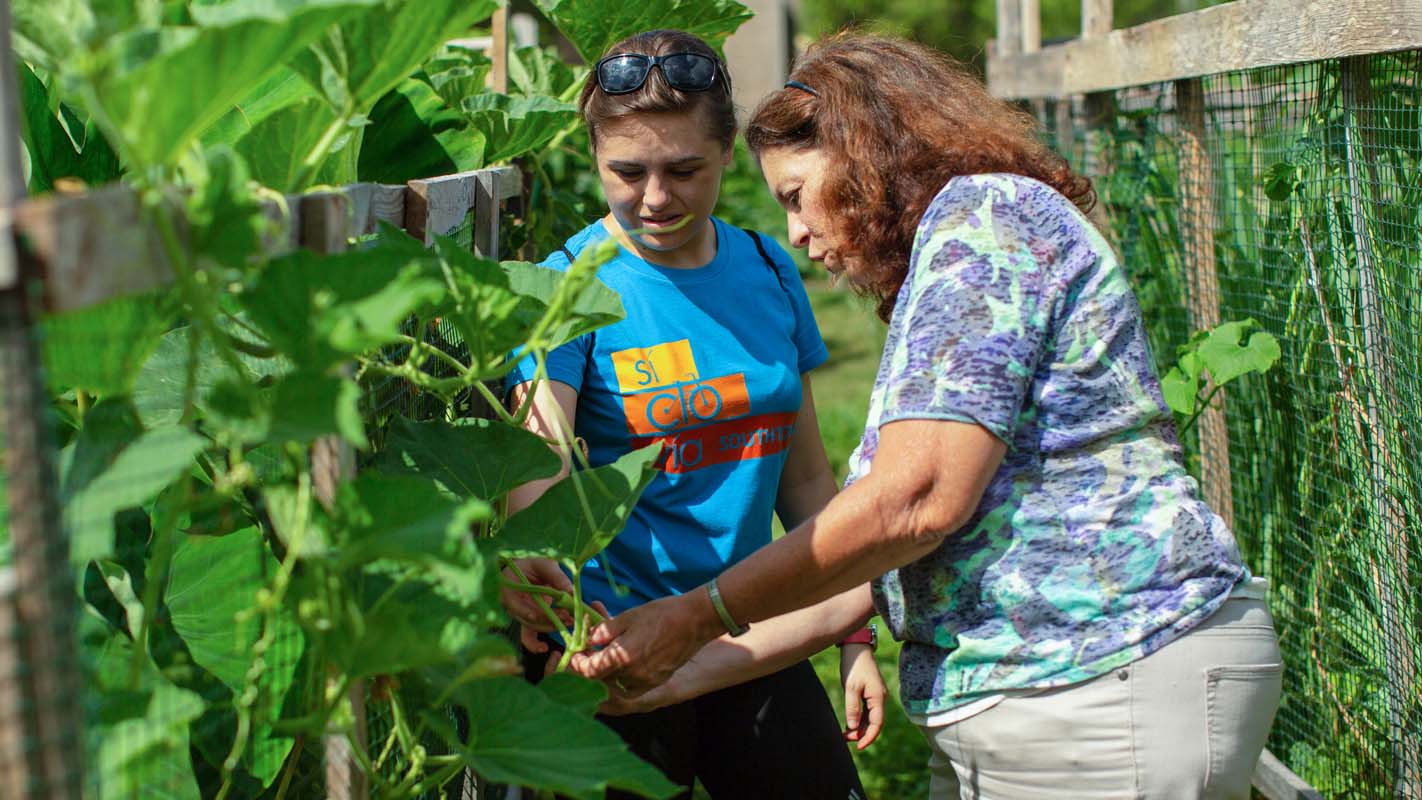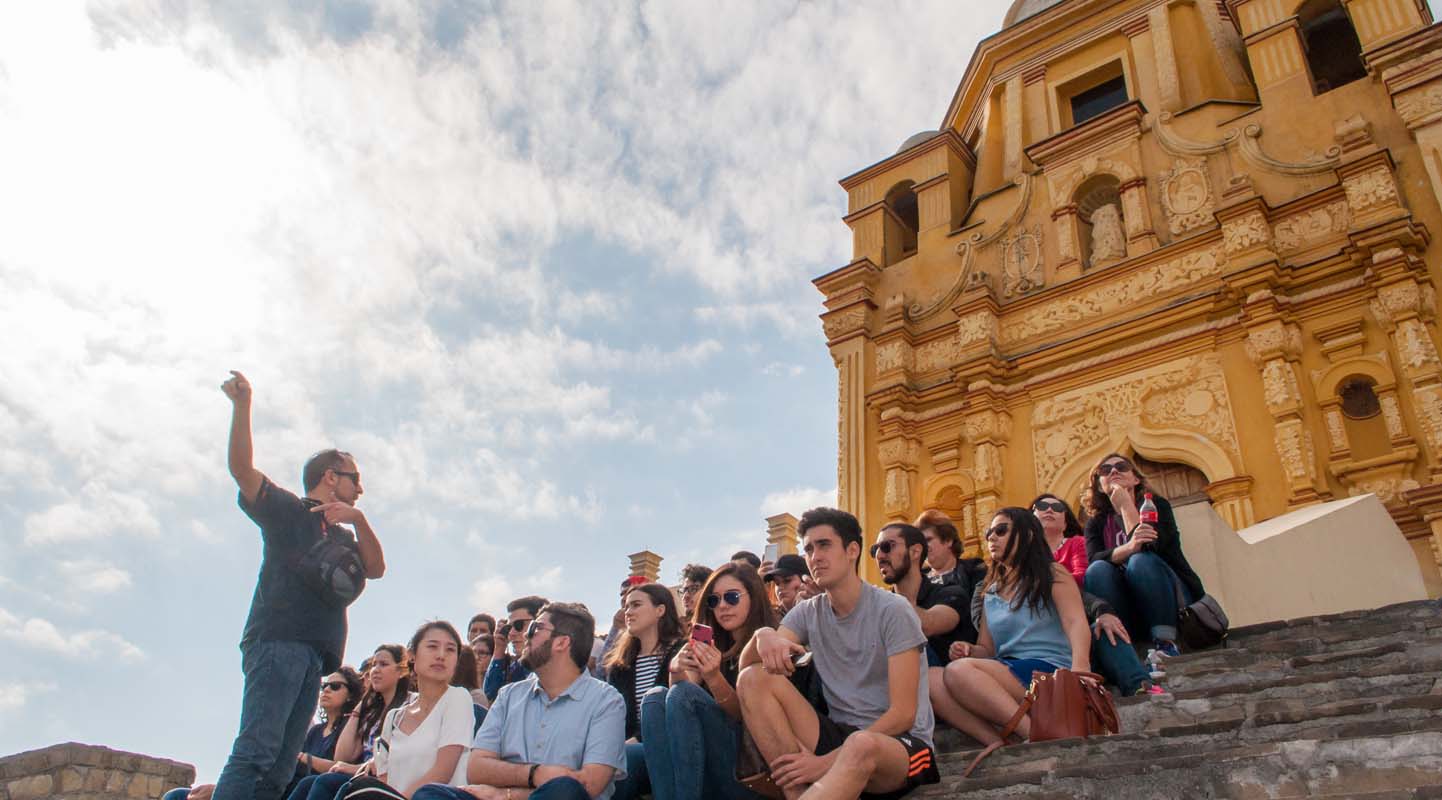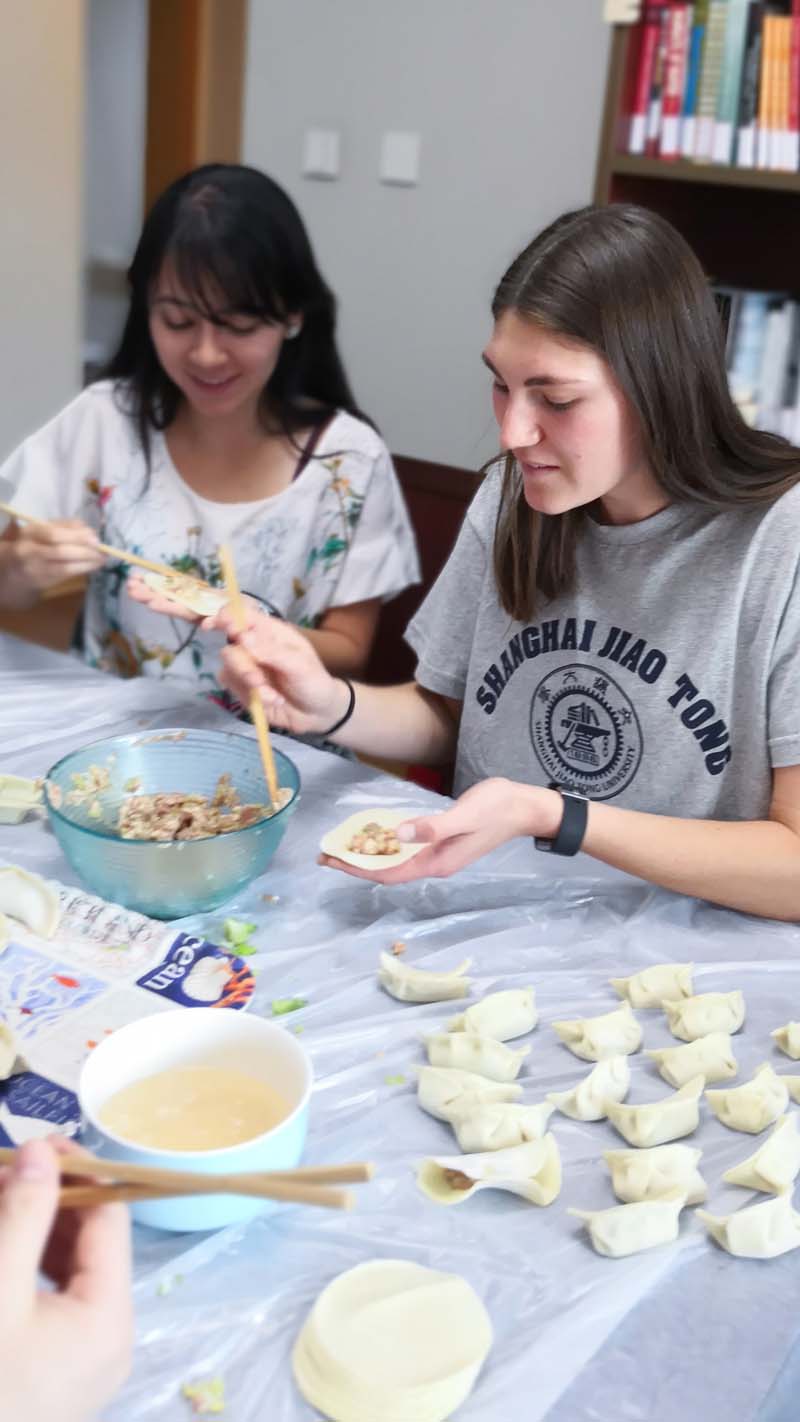How this liberal arts college promotes teaching and learning through interdisciplinary discovery
Trinity University’s emphasis on hands-on learning in multicultural settings across multiple academic disciplines lies at the heart of its distinctive liberal arts experience.

Here’s one big plus to Trinity University’s location just minutes from downtown San Antonio: The nation’s seventh-largest city offers nearly infinite opportunities for its students.
Trinity has taken full advantage of its geography. The university connects its students with chances to learn and work in the dynamic city of San Antonio as well as in neighboring Mexico and Latin America and in countries around the world.
A selective residential liberal arts institution of nearly 2,800 students, Trinity offers a wide range of humanities and STEM majors plus several high-demand pre-professional programs. The university is best known for its distinctive liberal arts education that promotes interdisciplinary discovery through hands-on experiences in multicultural settings and prepares its students to thrive in a competitive world.
With purpose-built programs that encourage students to make connections between classroom and real-world learning across multiple academic majors, Trinity offers a unique portfolio of interdisciplinary programs that help its students develop professional skills that will enrich their lives and careers.
Because of the recent addition of new and re-imagined student-centered spaces, “our campus has never been better equipped to support a new generation of cross-disciplinary endeavors in teaching, learning and discovery,” said Megan Mustain, Trinity’s provost and vice president for academic affairs.
Here are three interdisciplinary offerings that challenge Trinity students to dig deeply into their liberal arts experiences and apply what they’ve learned to the places where they live and work:
Skills-building internships for liberal arts majors
Trinity encourages students to get professional real-world experience through a one-of-a-kind connection between the liberal arts classroom and the world of work. Launched in 2013, the interdisciplinary Arts, Letters, and Enterprise summer internship program places Trinity students in internships at nonprofit organizations across the city.
Most students who sign up for ALE internships are majoring in the humanities, sciences and social science disciplines. To get a minor in ALE, they must take additional business courses in accounting and management and can elect to study ethics, communication, entrepreneurship and grant writing and fundraising.
As interns for a semester or a summer, ALE students aren’t fetching coffee or answering phones. They’re contributing to that nonprofit as a team member —coordinating volunteers, making presentations, leading meetings — that will help them develop public speaking, leadership, business literacy and other professional skills valued by the business, tech, nonprofit, arts and governmental sectors.
Students get academic credit for their internships. Donor funding also makes it possible for students to be paid for their work.
Last summer, 22 Trinity students had ALE internships at a wide range of San Antonio nonprofits. An art history major worked in the development office of a local nonprofit contemporary art gallery. A student double-majoring in anthropology and sociology created social media campaigns and learned the ins-and-outs of hosting events, camps and rehearsals at a performing arts space and hub for the city’s Black community.
And an aspiring environmental engineer interned at an environmentally-focused community organization that plants community gardens throughout the city. Among his summer projects were leading a workshop on a new children’s garden and designing and building a portable harvest station.
Trinity President Danny J. Anderson said the ALE program has helped self-motivated students combine their arts and humanities backgrounds with business skills to help local nonprofits thrive.
“That interdisciplinarity blended with that entrepreneurial spirit really does provide our students with some unique experiences to take out into the world,” Anderson said.


A bilingual and multicultural environment
Trinity’s home of San Antonio is the largest majority-Hispanic city in the United States, and it sits less than three hours from the Mexican border. Trinity leverages this geography through an interdisciplinary program known as Mexico, the Americas, and Spain.
MAS provides students an unparalleled way to engage with the bilingual and multicultural environment of San Antonio, the Southwest, and other Spanish-speaking parts of the world. Open to Trinity students from all majors, MAS serves as an umbrella for a wide range of Latinx educational experiences. It's designed to help Trinity students improve their Spanish language skills and gain cultural understanding through workshops, seminars, community volunteer work, academic research, study abroad trips, internships and other real-world experiences.
On campus, students can take MAS-related courses to study Spain’s historical, political and social dynamics; analyze how race is represented in Latin American films; and explore the social, cultural, political and economic issues surrounding the U.S.-Mexico border region. The latter course is bilingual — it’s taught in both Spanish and English — and offers students a chance to visit communities along the border.
Off campus, MAS offers Trinity students numerous study abroad options, including a full semester in Spain, a spring break field trip to Nicaragua, and a six-week summer immersion program in Madrid, where students study with Trinity professors but work for Spanish companies and live with Spanish host families. The university also has partnered with Spanish banking giant BBVA to offer recent Trinity graduates six-month internships at corporate offices in Madrid. MAS students who want to stay closer to home can get internships at nonprofits that work with San Antonio’s Hispanic community.
Recent Trinity graduate Shelby Smith said she’s strongly considering a career in law after interning with a San Antonio nonprofit that provides free and low-cost legal services to refugees and immigrants.
“I have always loved elements of law, but it never seemed as a viable option,” Smith said. “This experience has given me assurance that I have the capability to do more.”
Crossing borders into Asia
Trinity students study abroad in more than 40 countries on six continents. The university’s portal to China and other neighboring countries is through the East Asian Studies at Trinity program.
Trinity students who take part in this special interest program are immersed in the language and culture of East Asian countries, including China, Japan and South Korea. EAST connects students with internships and research opportunities so they can study business and social sciences within an East Asian context.
The distinctive EAST program offers two interdisciplinary degrees: a major in Chinese studies, which lets Trinity students study classical and contemporary Chinese language, culture, business and other topics; and a minor in East Asian studies, which exposes students to the language, culture and history of China and other East Asian nations.
EAST, established in 2006, also administers study abroad programs in Shanghai, Japan and Taiwan as well as a pair of study abroad programs in China that focus on ecology and geology. Trinity also has formal student exchange agreements with universities in Seoul, Tokyo and western Japan.
It’s these study abroad experiences that many students say are the hallmark of their Trinity education.
“What we want is to get students to China who would not necessarily go, because once you get a student abroad it will change their life forever,” said Stephen Lee Field, EAST’s co-director and the J.K. and Ingrid Lee Endowed Professor of Chinese Language and Literature “Some students know zero about China when they first go, but all students come back as experts.”

This custom content is sponsored by Trinity University and developed by Inside Higher Ed's sponsored content team. The editorial staff of Inside Higher Ed had no role in its creation.


